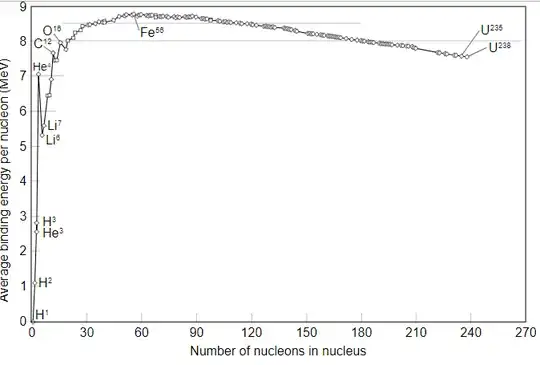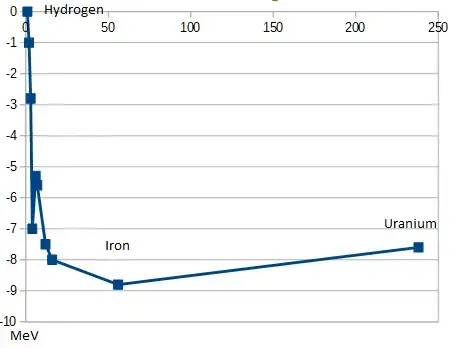In general, both fusion and fission may either require or release energy.
Purely classical model
Nucleons are bound together with the strong (and some weak) nuclear force.
The nuclear binding is very short range; this means that we can think of nucleons as "sticking" together due to this force.
Additionally the protons repel due to their electric charge.
As geometry means that a nucleon has only a limited number of other nucleons it can "stick" to, the attractive force per nucleon is more or less fixed.
The repulsive electric field is long range. That means that as the nucleus grows, the repulsion grows, so that eventually that repulsion exceeds the attractive effect and one cannot grow the nucleus further. Hence a limited number of possible elements.
Effectively this means the attractive force per nucleon increases rapidly for a small number of nucleons, then tops out and starts to fall.
Equivalently, the binding energy per nucleon behaves similarly.
As @cuckoo noted, iron and nickel have the most tightly bound nuclei; iron-56 having lowest mass per nucleon and nickel-62 having most binding energy.
This image (from Wikipedia) illustrates the curve in the typically presented manner:

However, I prefer to think of binding energy as negative and therefore better visualize iron as being the lowest energy state:
 For lighter elements:
For lighter elements:
- Fission requires energy
- Fusion releases energy
For heavier elements, the opposite is true.
The reason we mainly observe the release energy cases is because:
- It is easier to do
- It is more "useful"


